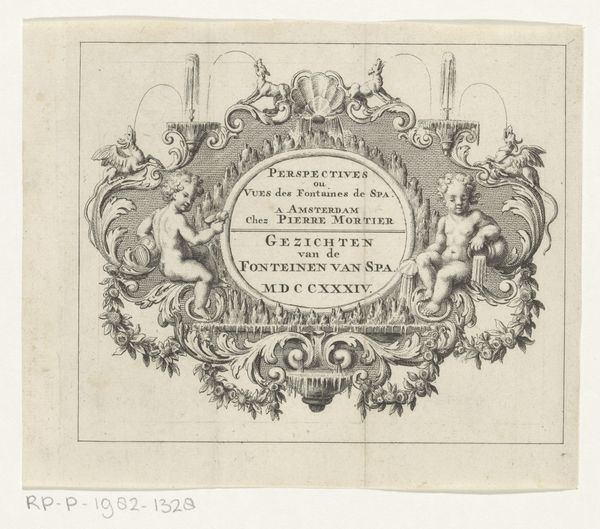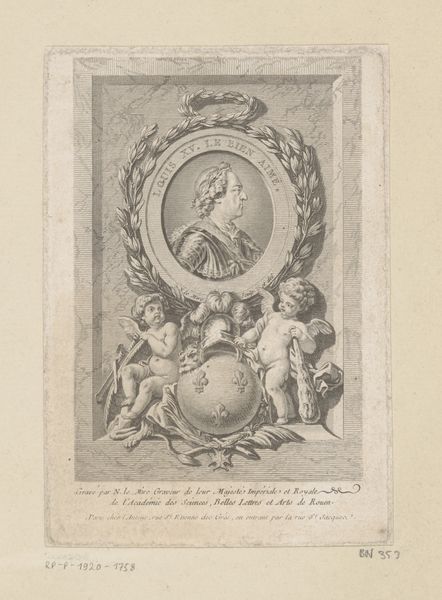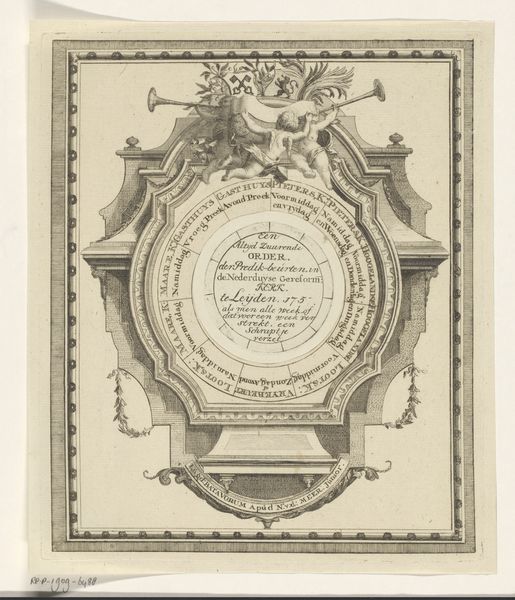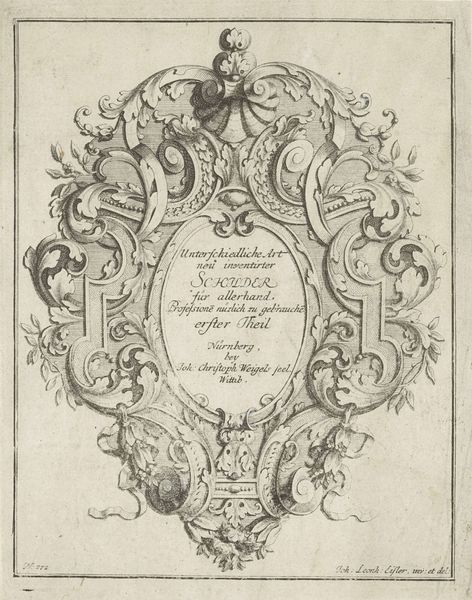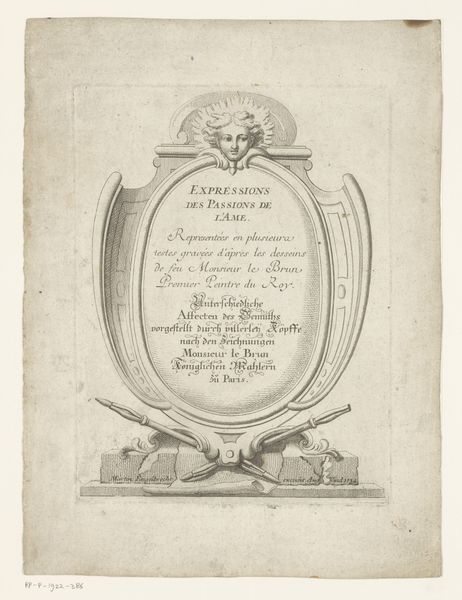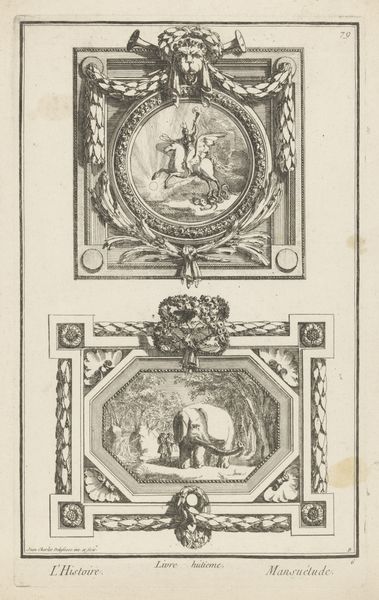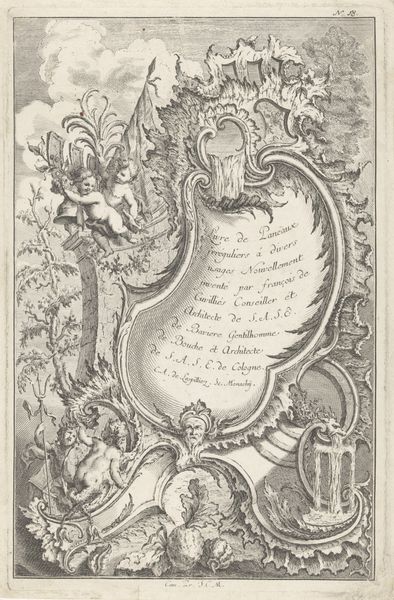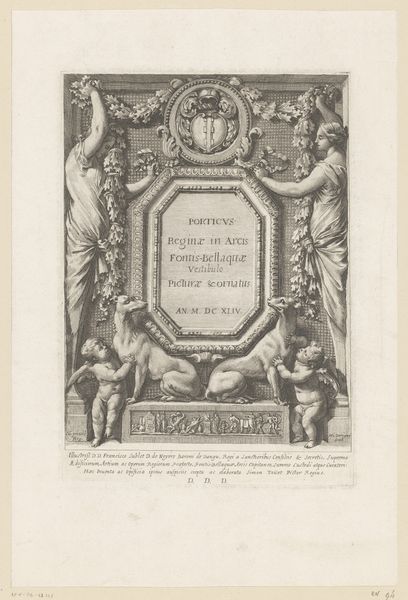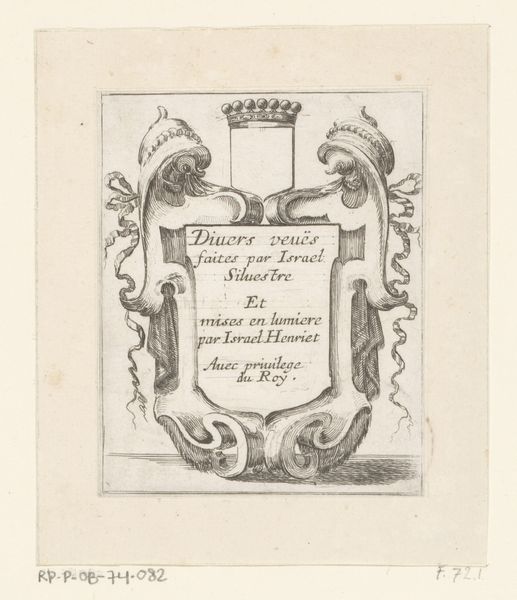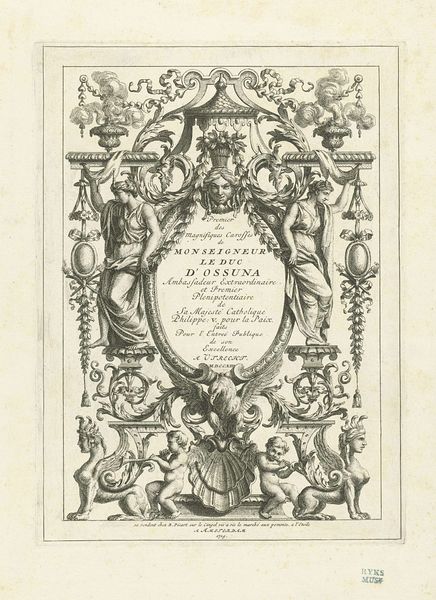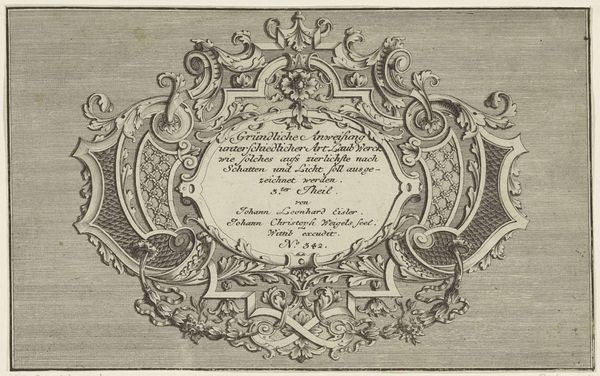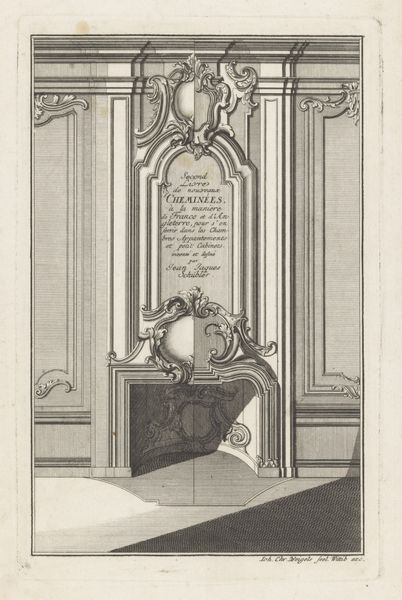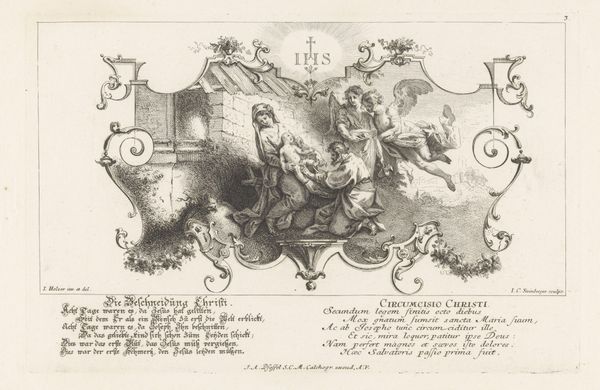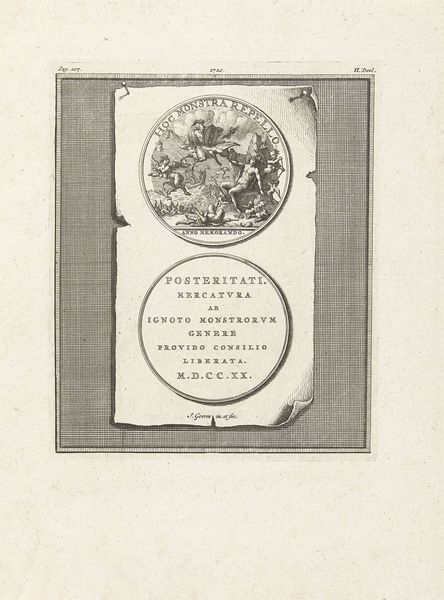
#
comic strip sketch
#
aged paper
#
old engraving style
#
personal sketchbook
#
idea generation sketch
#
sketchwork
#
old-timey
#
sketchbook drawing
#
storyboard and sketchbook work
#
sketchbook art
Dimensions: height 226 mm, width 166 mm
Copyright: Rijks Museum: Open Domain
Editor: This is "God de Vader" by Johann Esaias Nilson, dating from around 1765 to 1770. It's currently at the Rijksmuseum. It looks like an engraving or etching. I'm struck by its formal style; it's very ornamental, with all those borders and frames around the central image. What do you see in this piece? Curator: This image, at its surface, presents a very traditional, patriarchal vision of God the Father. But, if we delve deeper, it prompts a conversation about the power structures embedded in religious art. Consider the period it was created – the late 18th century, a time of immense social and political upheaval, right before the French Revolution. How might Nilson’s work reflect or challenge the existing hierarchies of the time? Editor: So, you're saying the image of God the Father as this all-powerful, bearded figure could be read as reinforcing societal power structures? Curator: Precisely. And, thinking intersectionally, how did images like these shape the understanding of gender roles and familial hierarchies? Were there any artistic or societal counter-narratives at play then? Nilson worked at a time of challenge and change for those same "divinely ordained" hierarchies and roles. I would want to study other sketches by him to fully understand the impact he wished his final work to have on society. Editor: That's fascinating, I hadn't thought about the social and political context in that way. I was mainly looking at it from a purely aesthetic perspective, but framing it within a broader understanding of power and gender roles opens up a whole new level of interpretation. Curator: Exactly. Art is never created in a vacuum. By exploring the social, historical, and philosophical context, we gain a richer, more nuanced understanding. Editor: I will never look at a work of art the same way. Thanks!
Comments
No comments
Be the first to comment and join the conversation on the ultimate creative platform.
